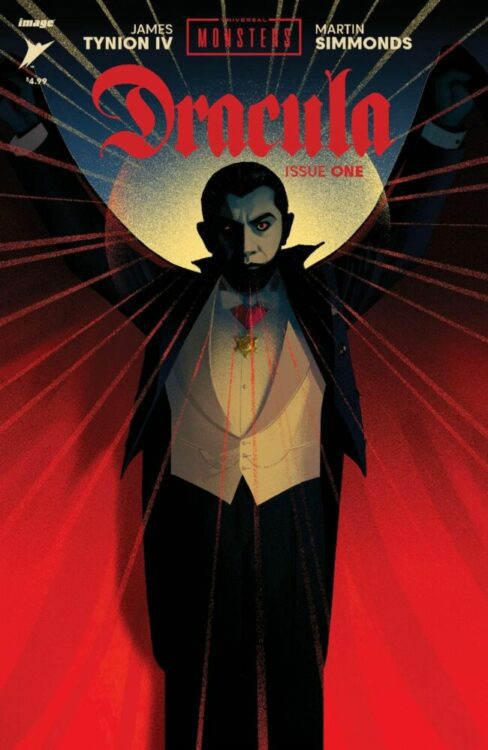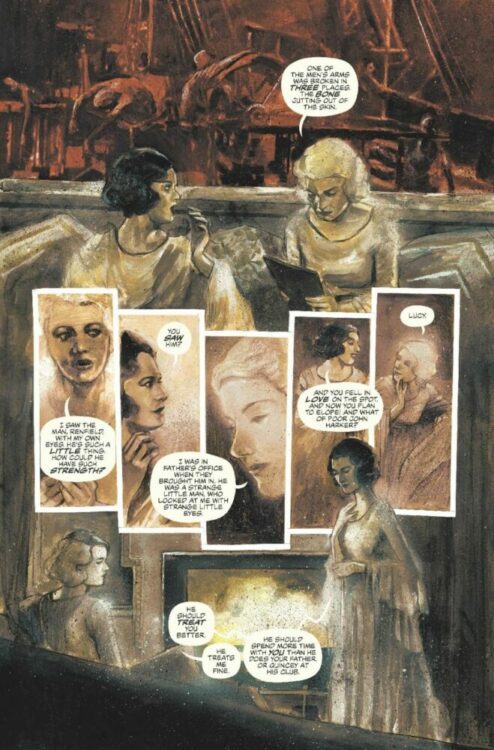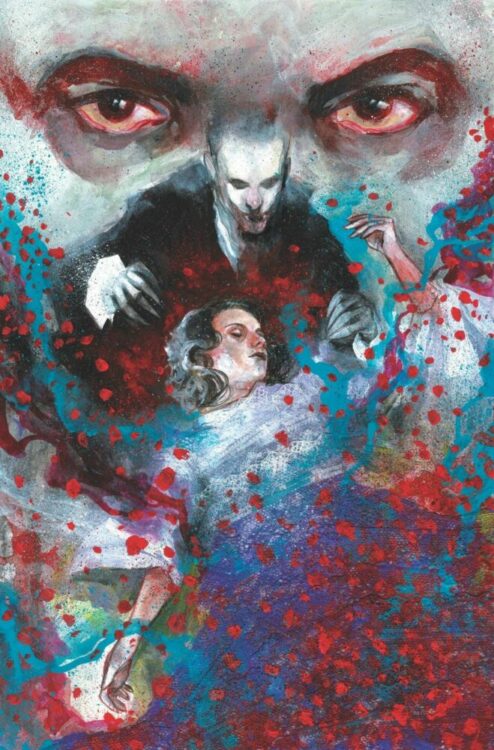“A moment ago, I stumbled upon a most amazing phenomena. Something so incredible, I mistrust my own judgement.” (from Dracula, 1931)
Sometimes, the announcement of yet another interpretation of a classic character or narrative can fill you with dread. There are surely only so many times you can tell the same story, right?
However, that kind of statement is lost entirely on a comic audience. Many superhero titles have been rehashing the same story over and over again for decades, spreading out into different media to retell the most successful stories from a hero’s back catalogue.
When Image Comics announced their interpretation of the Universal iteration of Dracula, I quietly waited with bated breath, hoping beyond hope that the outcome would be everything that a classic horror fan could want. Did James Tynion IV, Martin Simmonds, and Russ Wooton deliver the goods?
Spoiler: Hell yeah, they did.

Credit: Image Comics
The first thing to understand about this comic is that it is an adaptation, but it is along the lines of typical movie-to-comic translations. Universal Monsters: Dracula has taken the aesthetic of the 1931 movie and created something new with it. The characters are the same, and the resemblances to the actors is quite uncanny — you know who they are, but the art is not photographic in nature. The character of Dracula, as the easiest example, moves and speaks just like Bela Lugosi. He has that aloof smugness that the 1930s Count had, but there is evil lurking beneath the surface. Lugosi always claimed that Dracula was one of the hardest monsters to play because so much of the acting requires innuendo and subtle gestures. Martin Simmonds brings that nuance of character acting up to date and merges it with some disturbing, even terrifying, imagery,
The opening page with Renfield, simply one of the best supporting characters in the novel, picking at the flies in his cell while talking about the life force that has been promised to him, is a wonderful page of artwork. The nine-panel grid is broken up into two distinct sections that, through perfect coloring, creates a natural cross motif, as if the very narrative form is confining Renfield, trapping him in his own story. This is the high bar the comic sets, and then exceeds without breaking a sweat.
Complementing Simmonds’ art is Russ Wooton’s lettering. The white borderless speech balloons sink into the page to become a part of the art work, instead of simply resting on the surface. The theatrical tones of the speech is brought out of the script by the placing of the text and choice of font. The overall effect is that of creating a classic movie feel while engaging in a modern, comic book way.

Credit: Image Comics
In this comic, the story doesn’t matter that much — it is the way that it has been told that is engaging and delightful. Elements of the narrative have their genesis in different adaptations of the original novel, with the comic owing as much to Francis Ford Coppola’s Dracula than it does the 1931 Universal Pictures version. There are even elements of the costume dramas from the Hammer Horror versions seeping in through the borders. But the count himself is Bela Lugosi through and through.
For such a well known story, the script is fresh, and the subtle changes in narrative are surprising and welcome. The conversations between characters are naturalistic and there aren’t any information drops or unnecessary exposition that serve only to give the readers background story. Everything you need is woven into the speech or reflected in the superb artwork.
Each page bleeds to the edge with gutters disappearing in some instances making it impossible to escape the story as it unfolds. The design makes you a part of it with your fingers brushing against the scenery and slipping into the blood stain background as you turn the page. This is an immersive experience, which is quite tricky to pull off with a standard North American monthly comic.

Credit: Image Comics
At one point, just after reading, I doubted my excitement for it. Had I, in a moment of red mist, devoured this comic, allowing my desire to enjoy it overshadow the critic within me? But then I realized, like so many aspects of this comic, it doesn’t matter. It is meant to be experienced head on. You are meant to dive straight in, leaving everything else behind and become immersed by the comic, the story, and the characters just as if it was a movie experience — just as the audience would have been terrified by Lugosi upon the massive screen in 1931. This is horror, pure emotion driven, and visceral.
Image Comic’s Universal Monsters: Dracula is an absolute dream (nightmare?) of a comic and one that will haunt me for weeks. It’s visually stunning and crafted to boost the 1931 film aesthetics to a modern sensibility. If you remember the innovation horror comics of the early 1990s, with titles like Interview with the Vampire and Psycho, then you will have a good idea of what to expect here. It is a love letter to the history of the character and the horror genre in comics.

